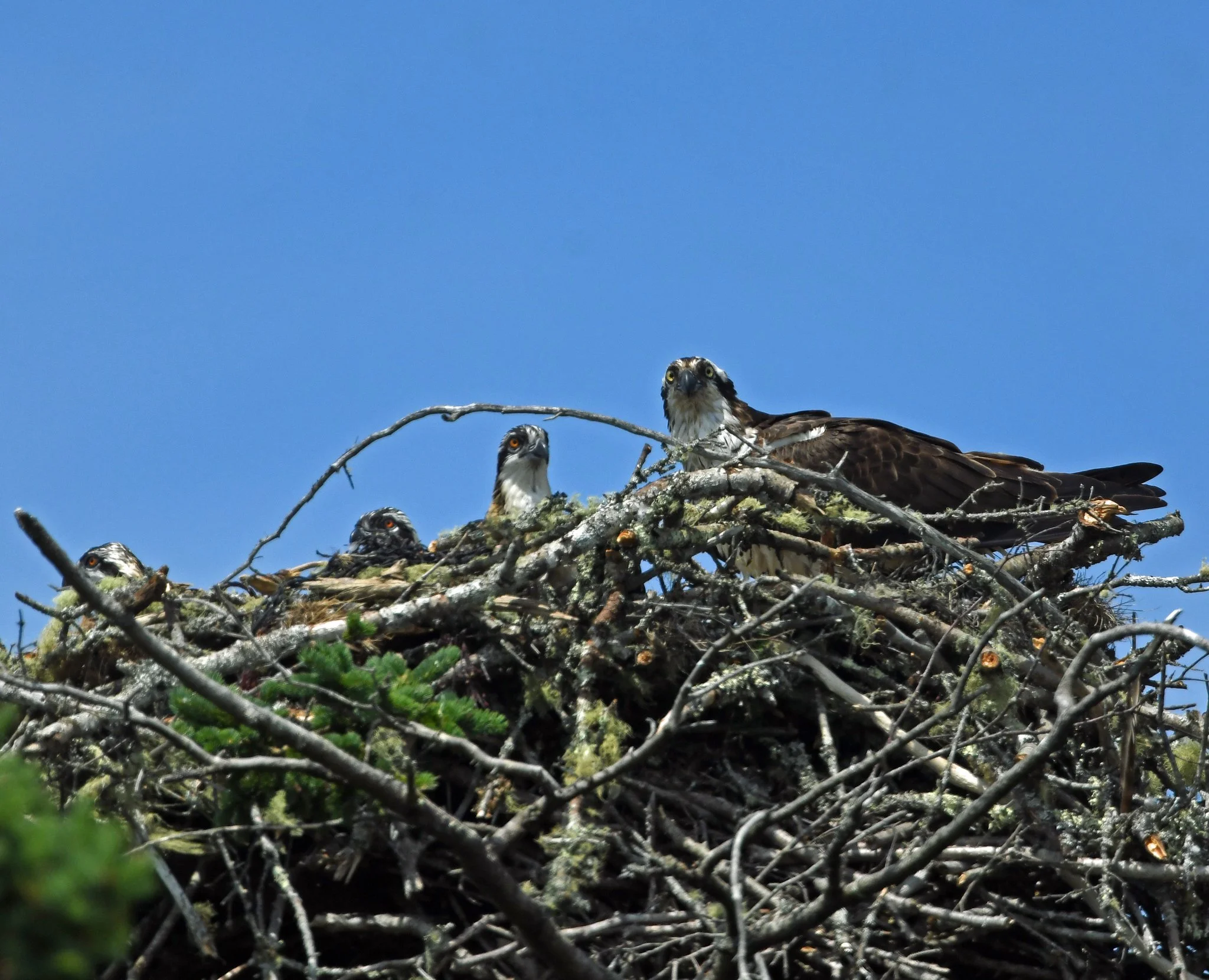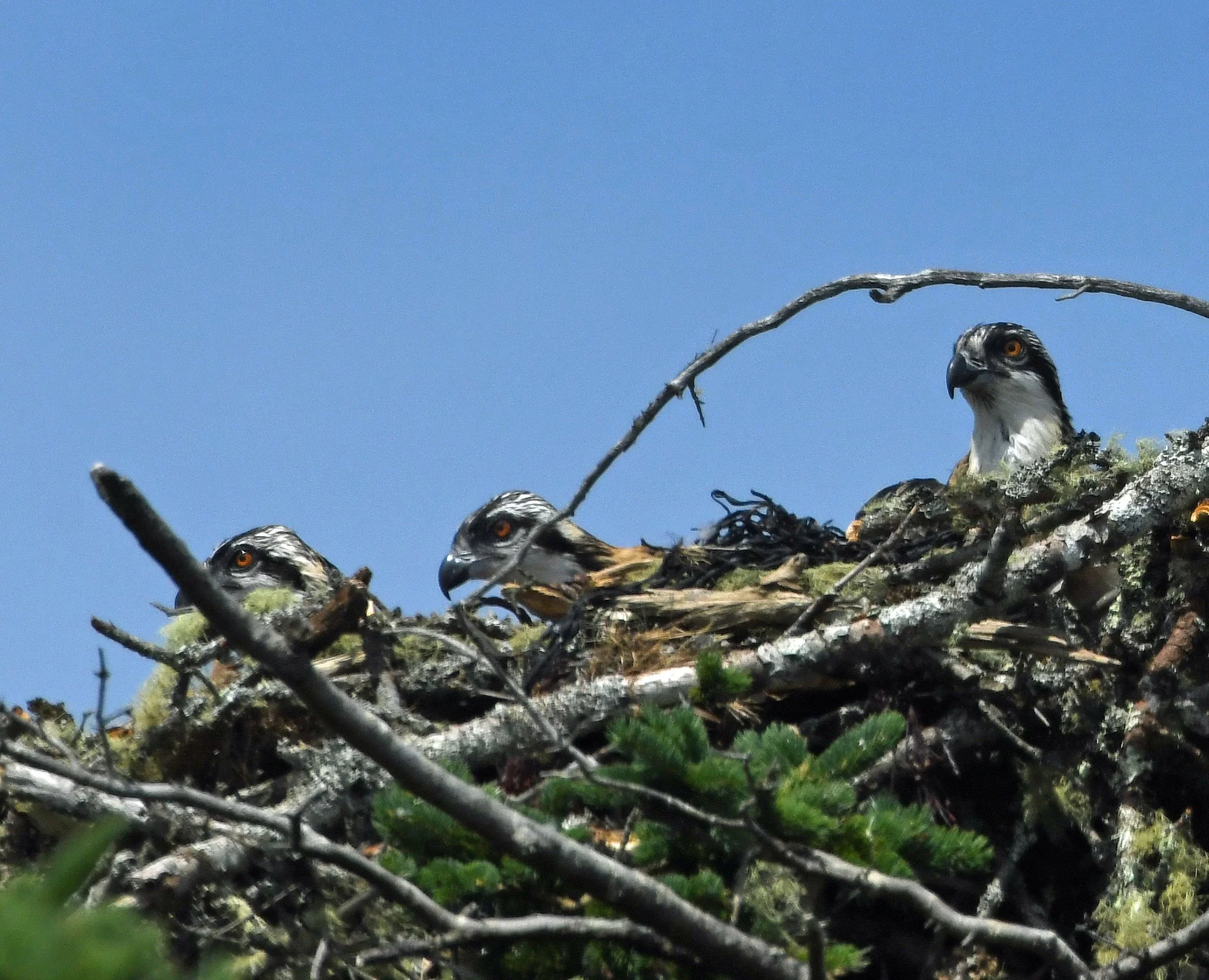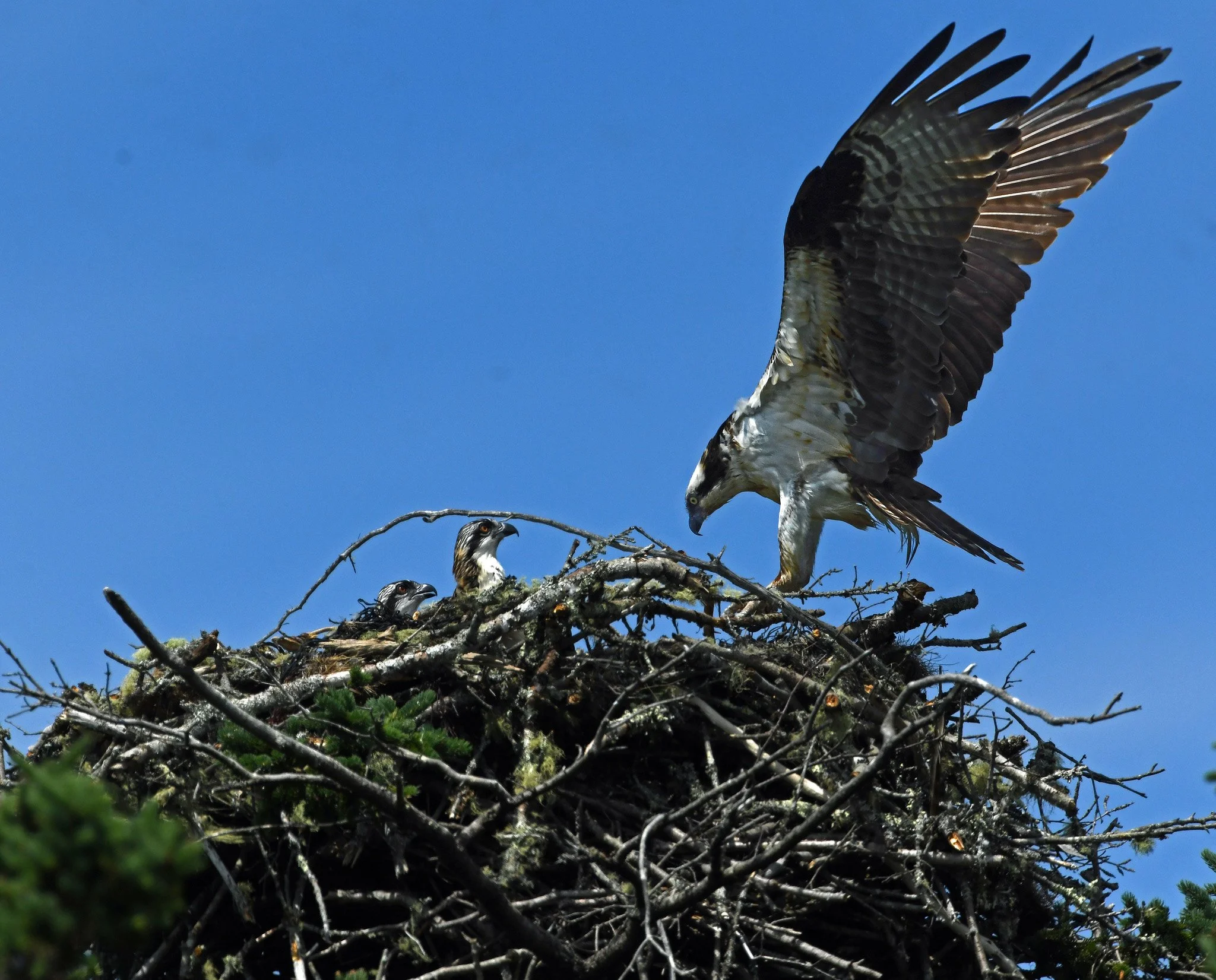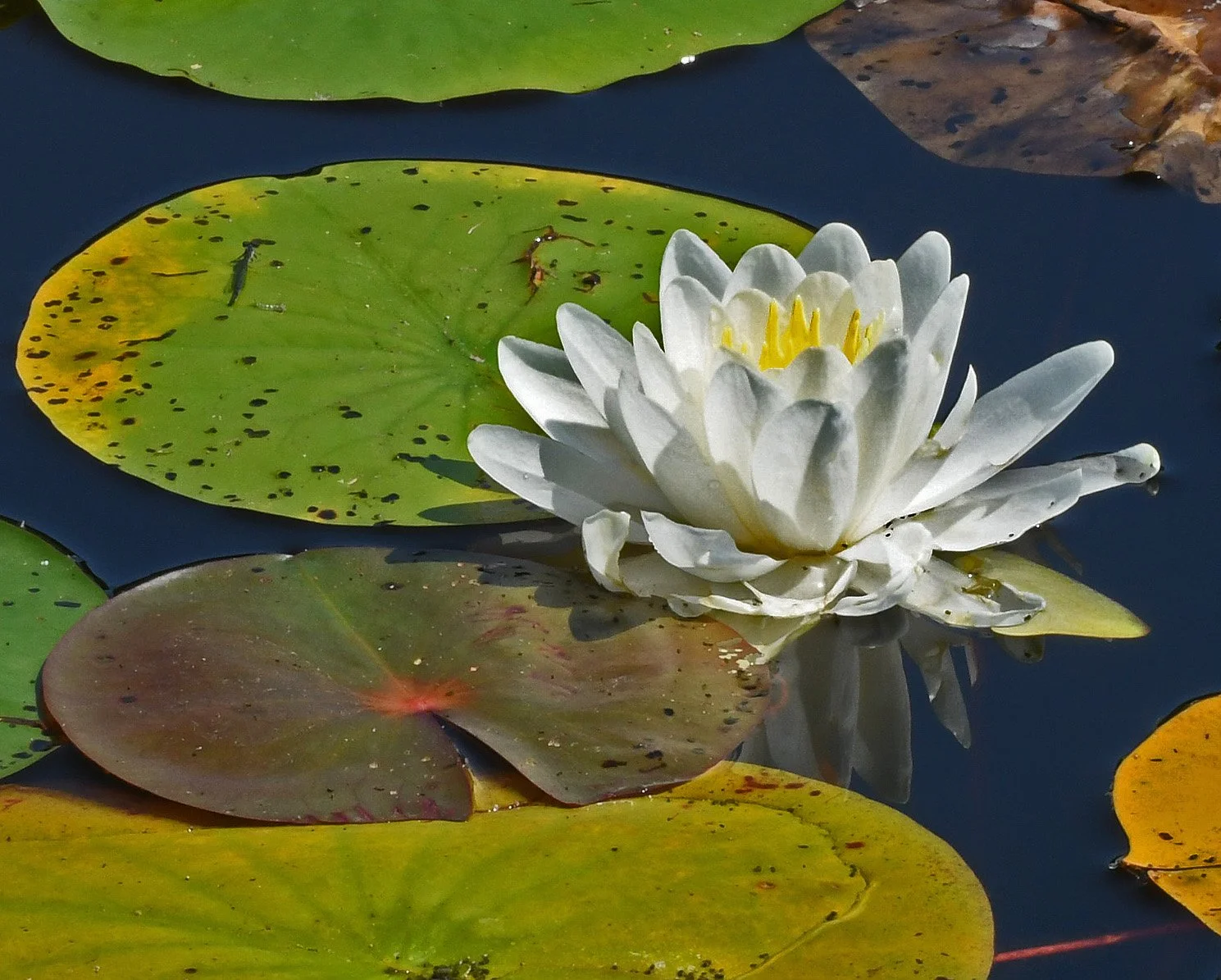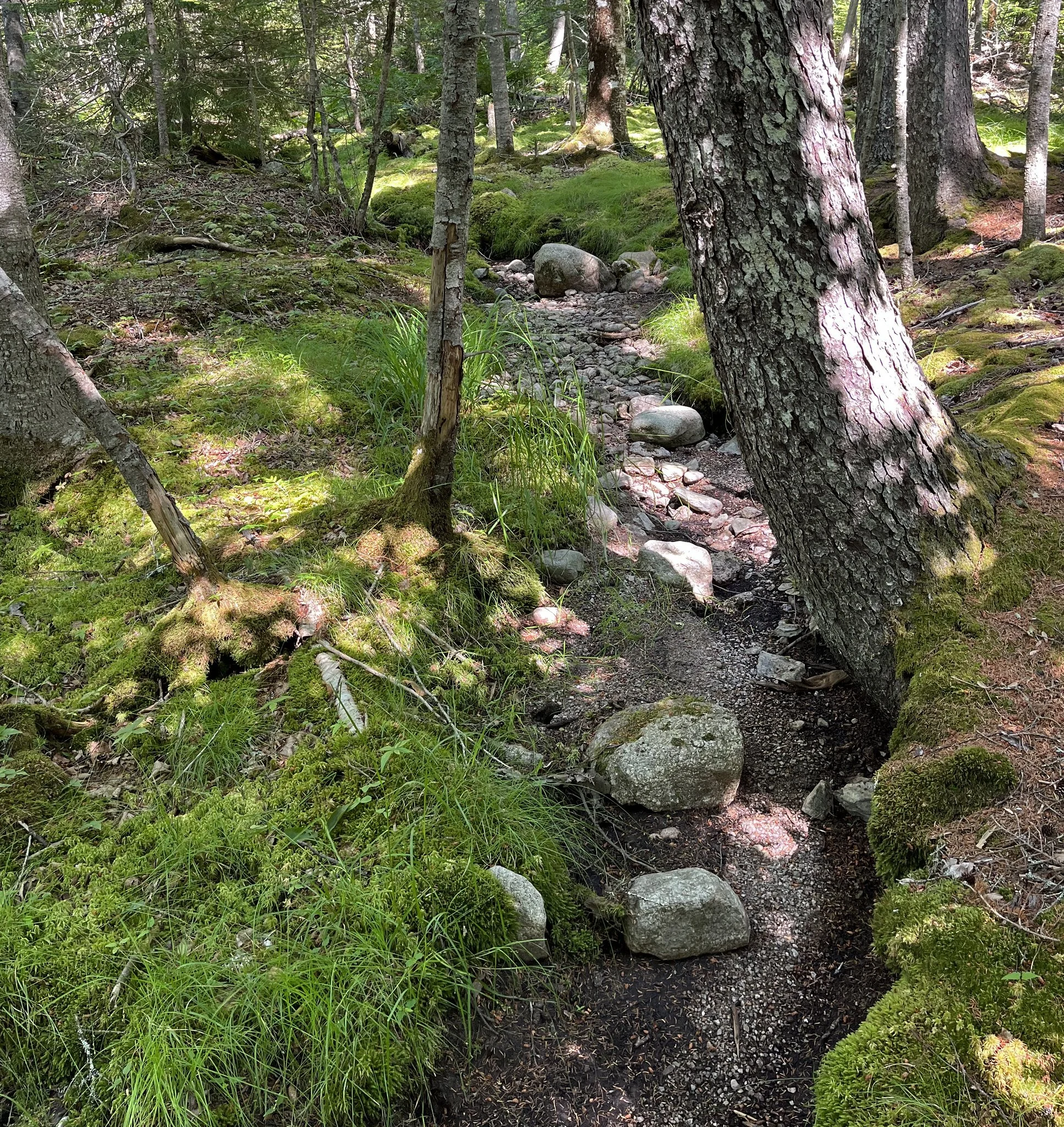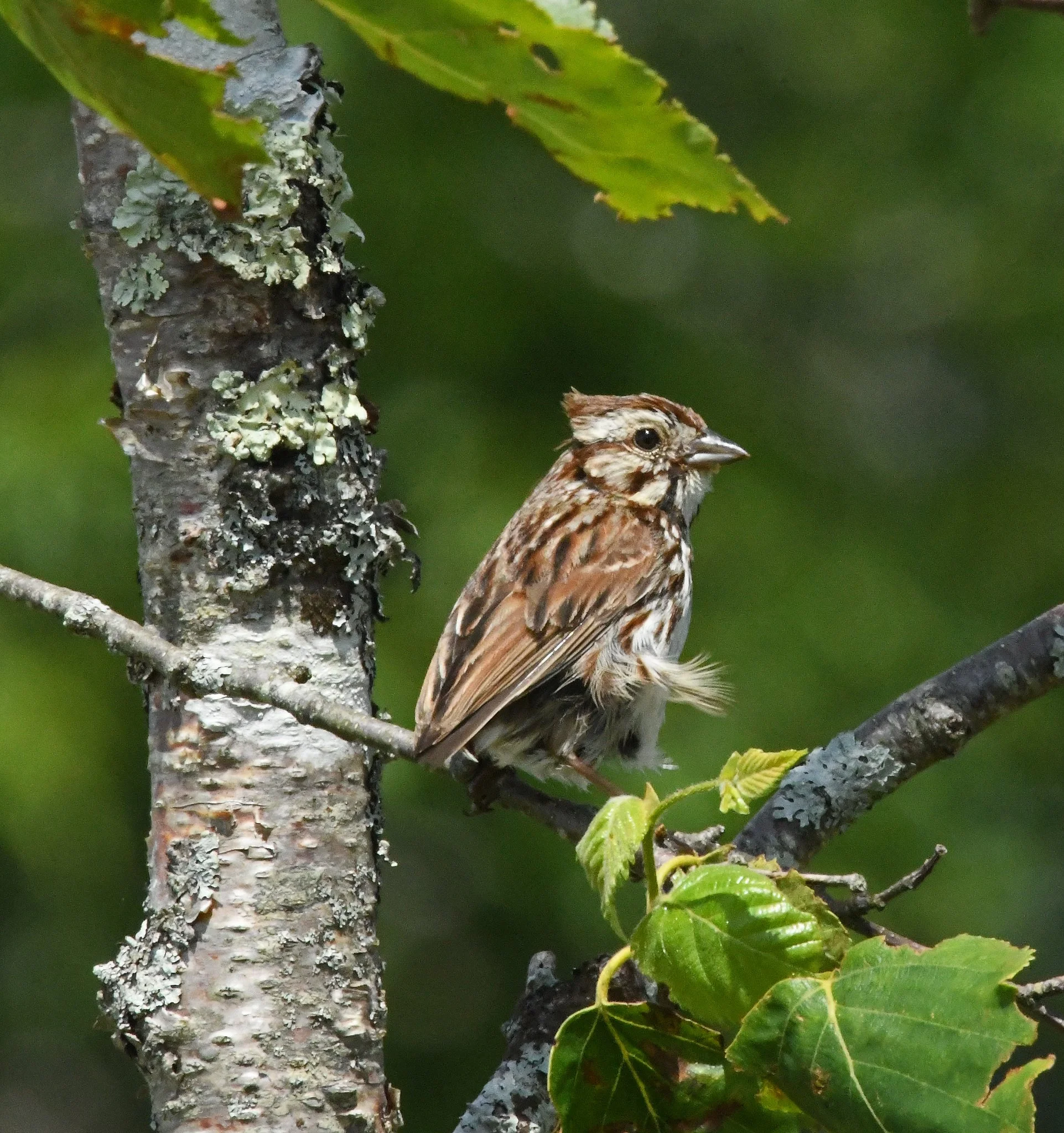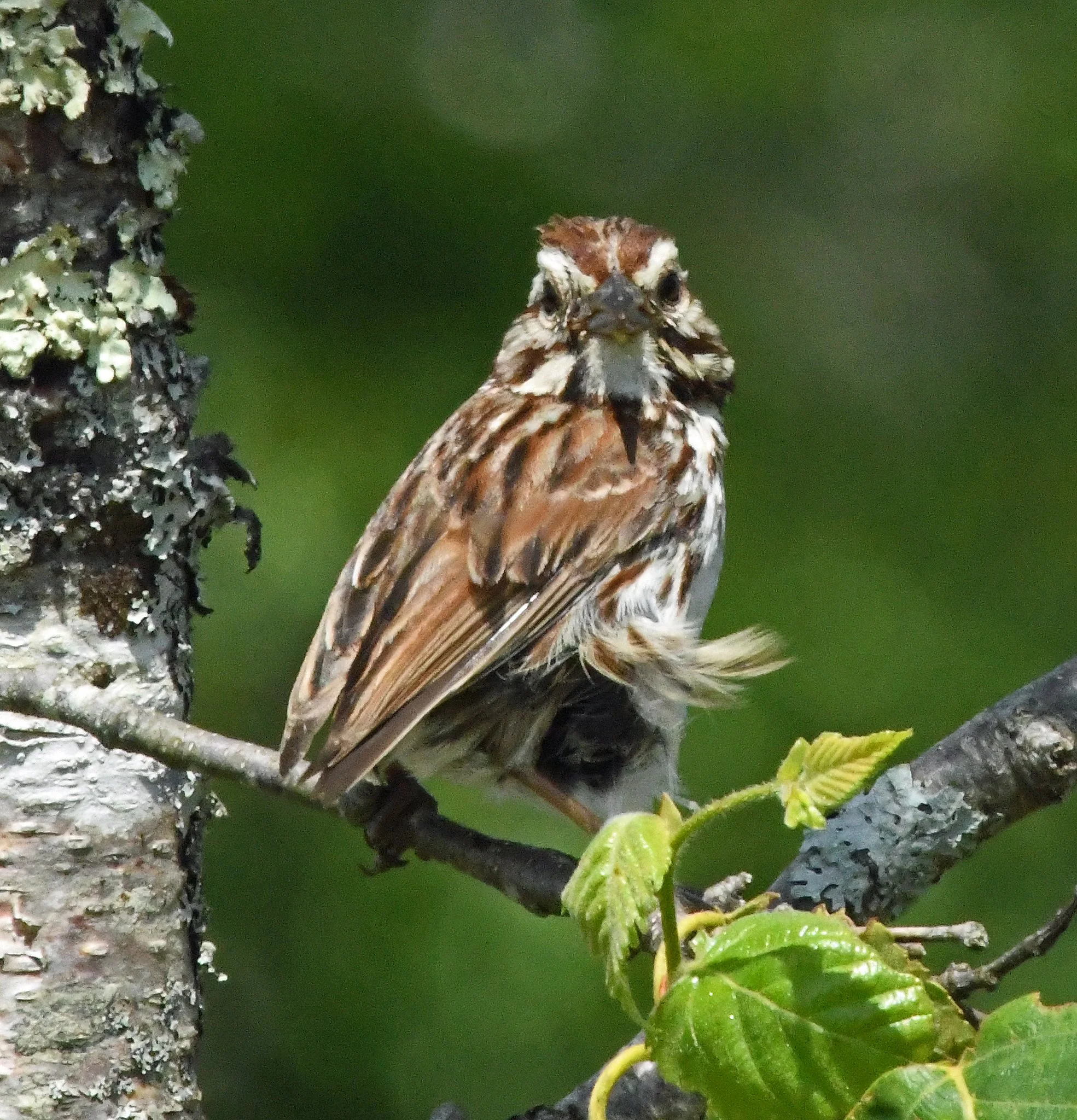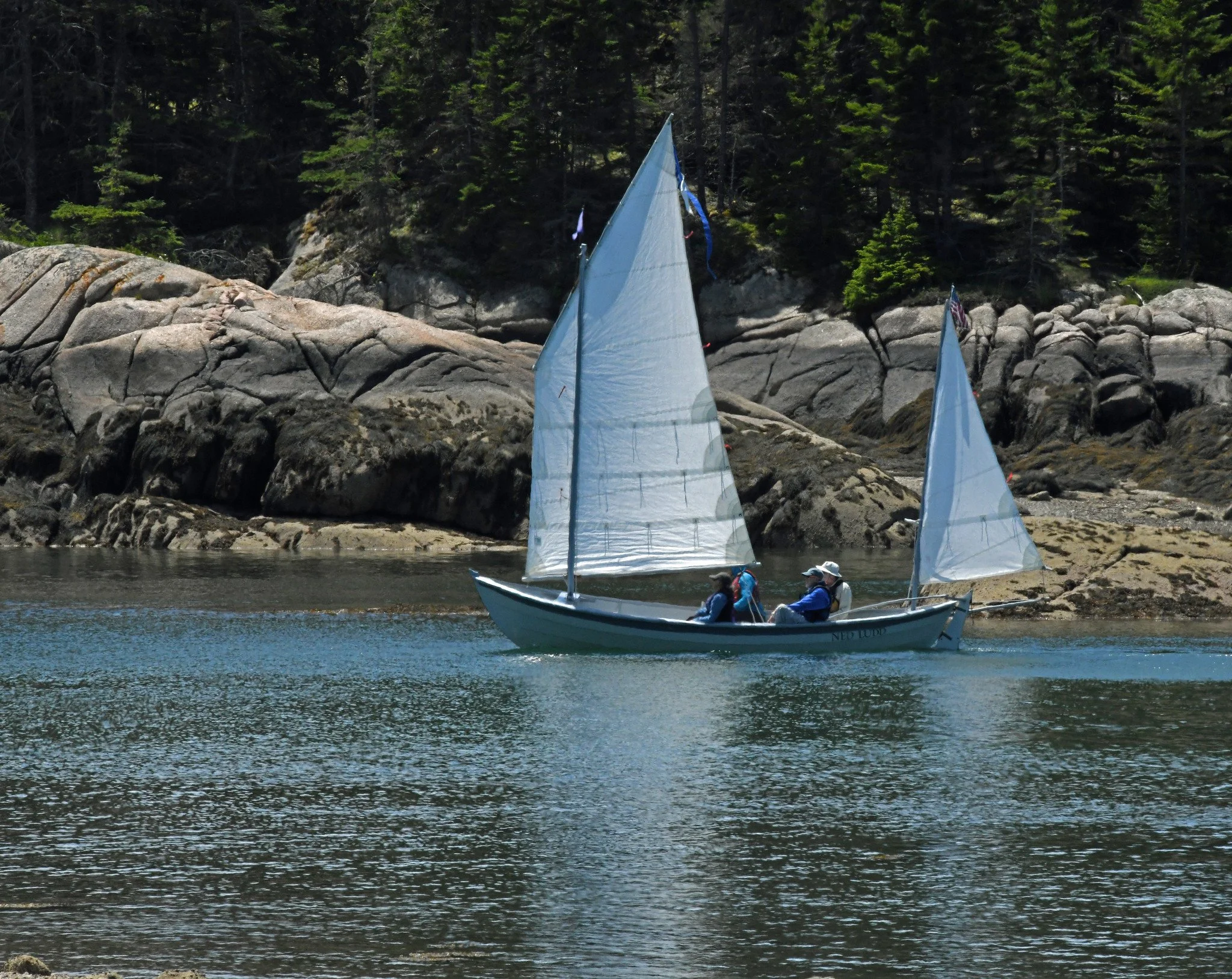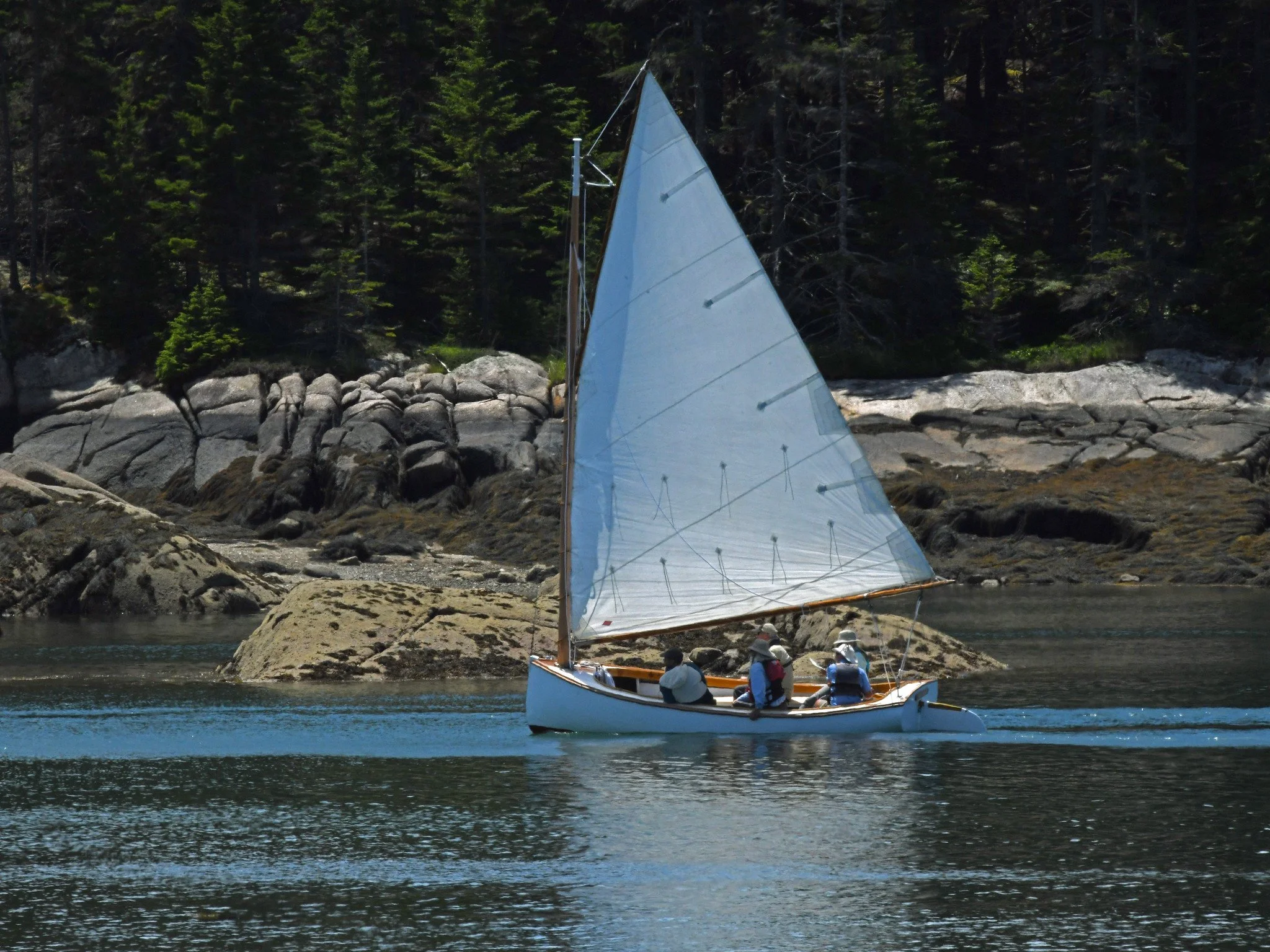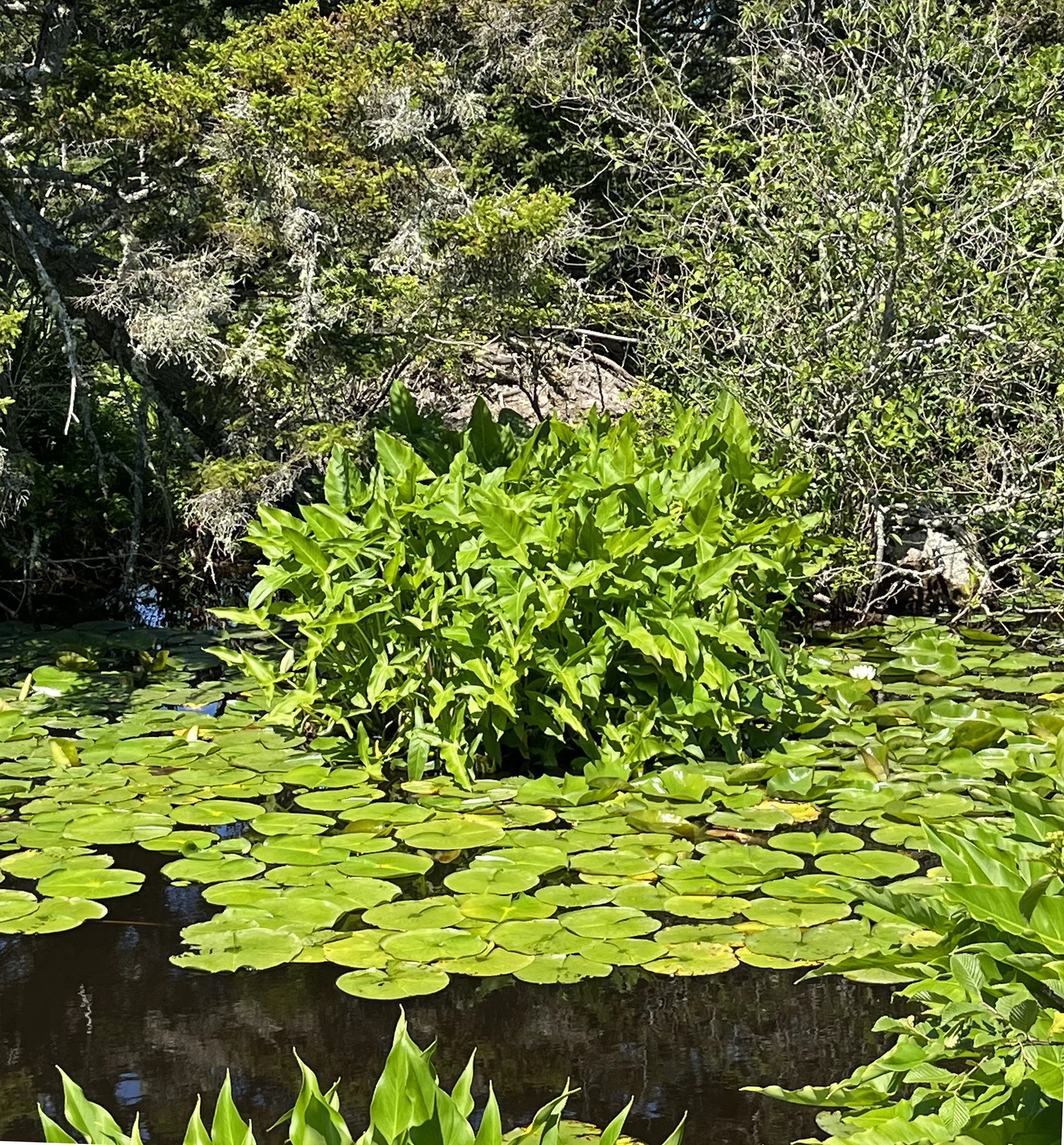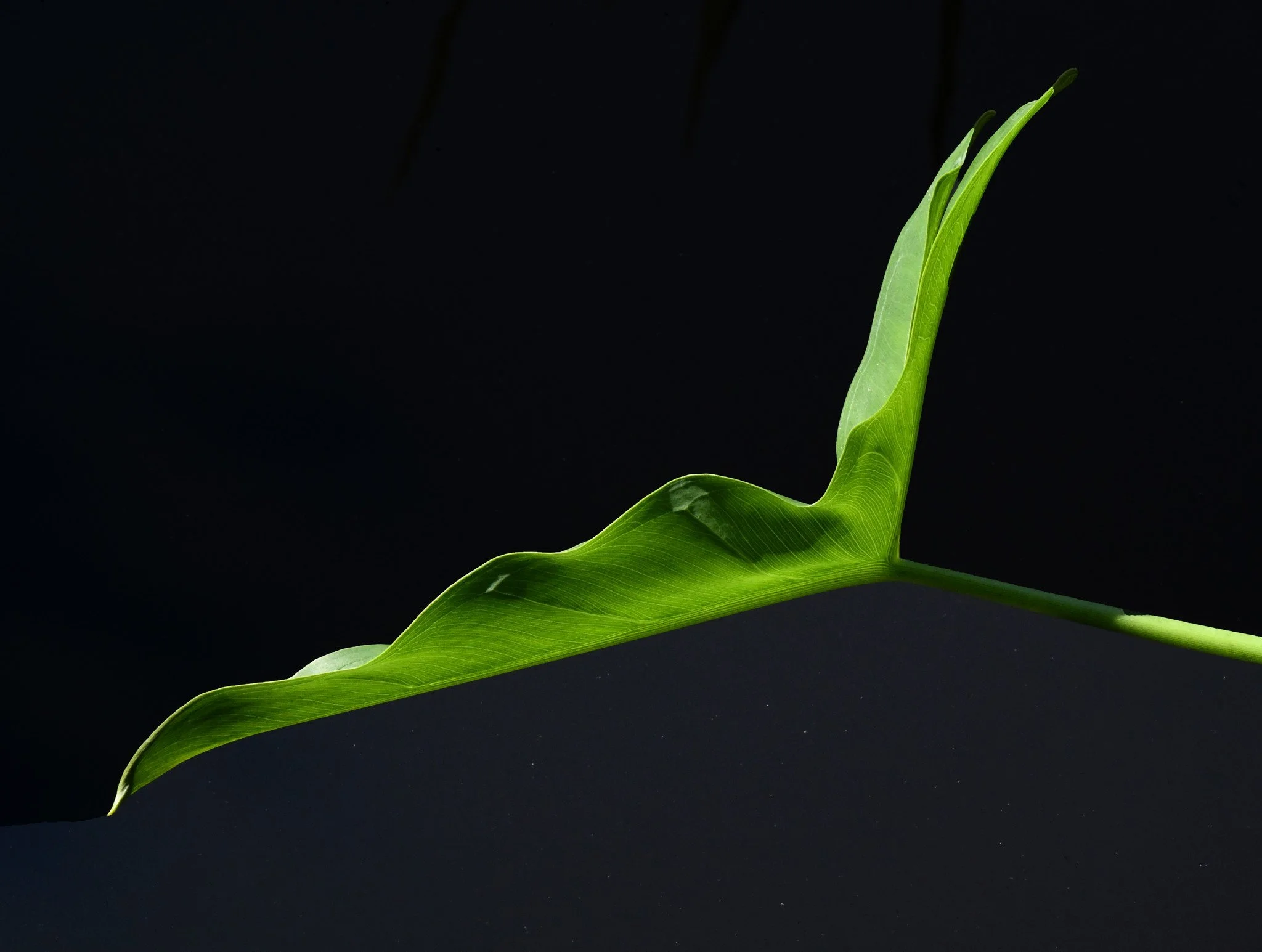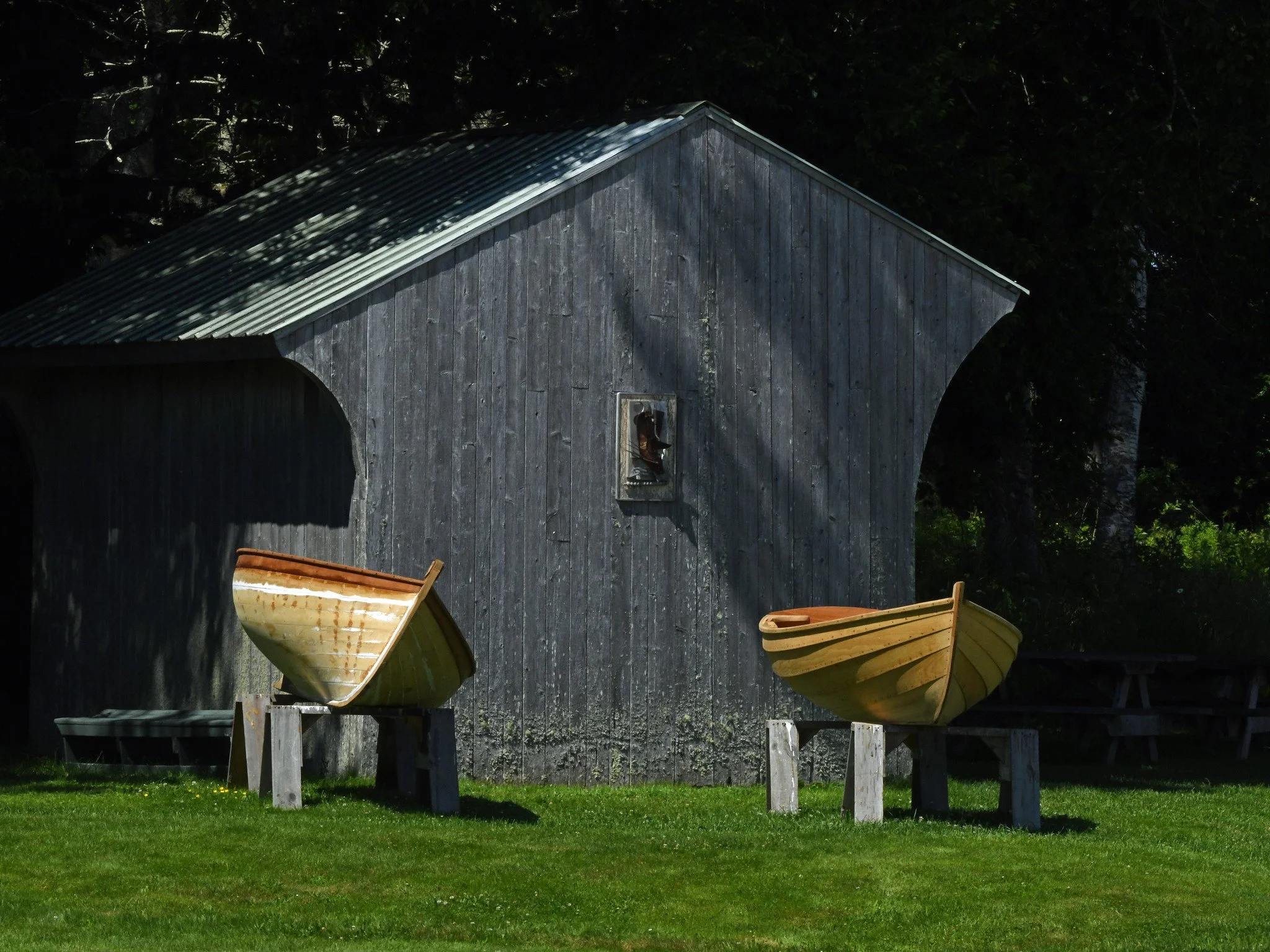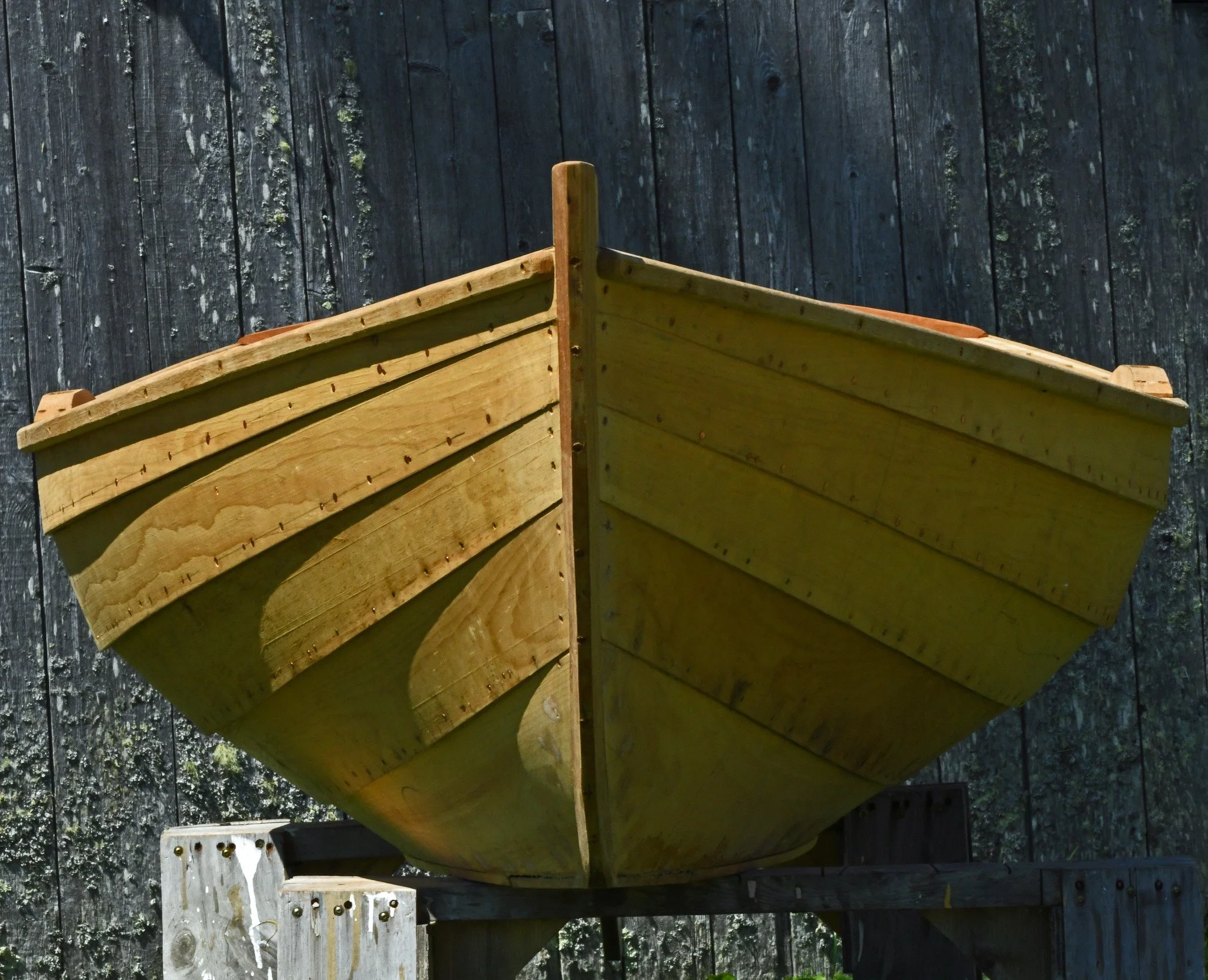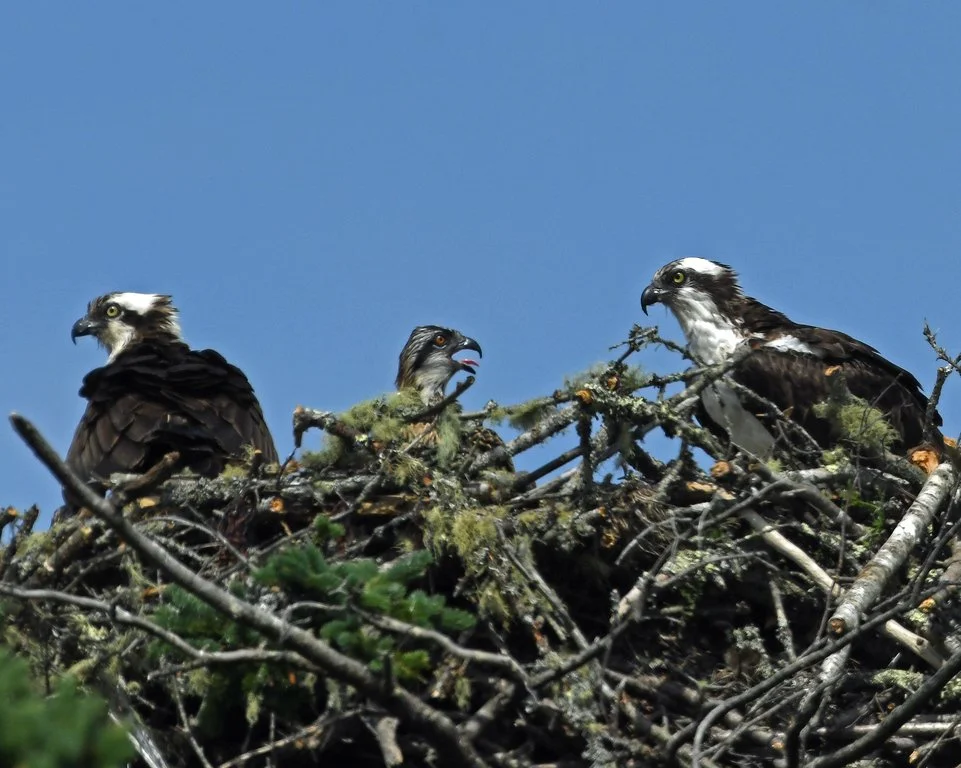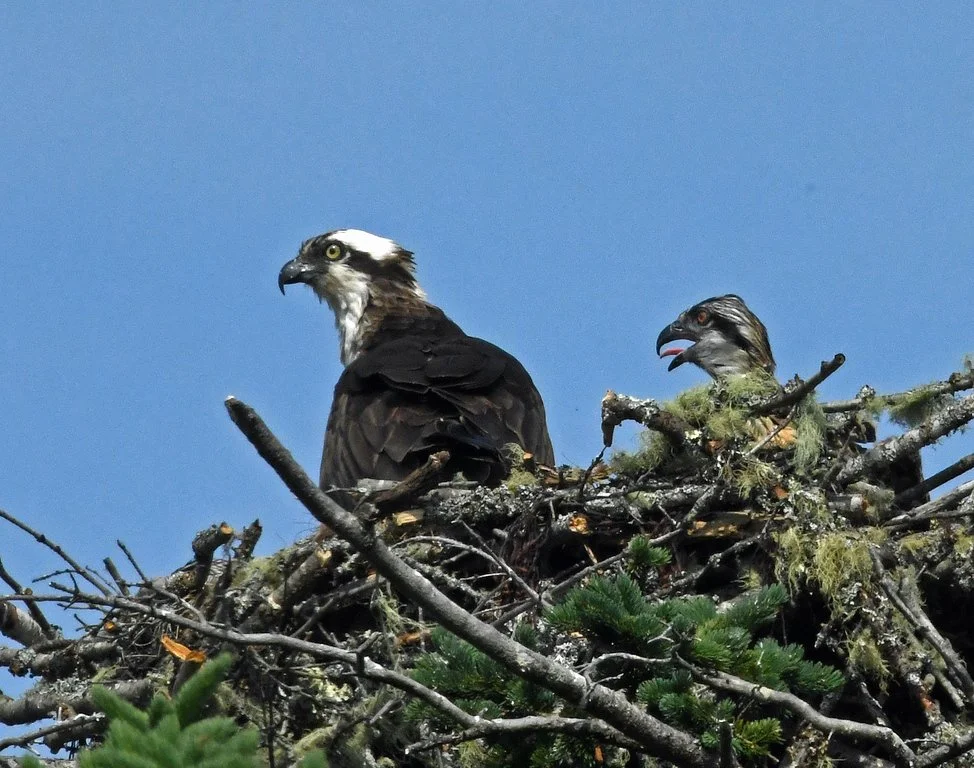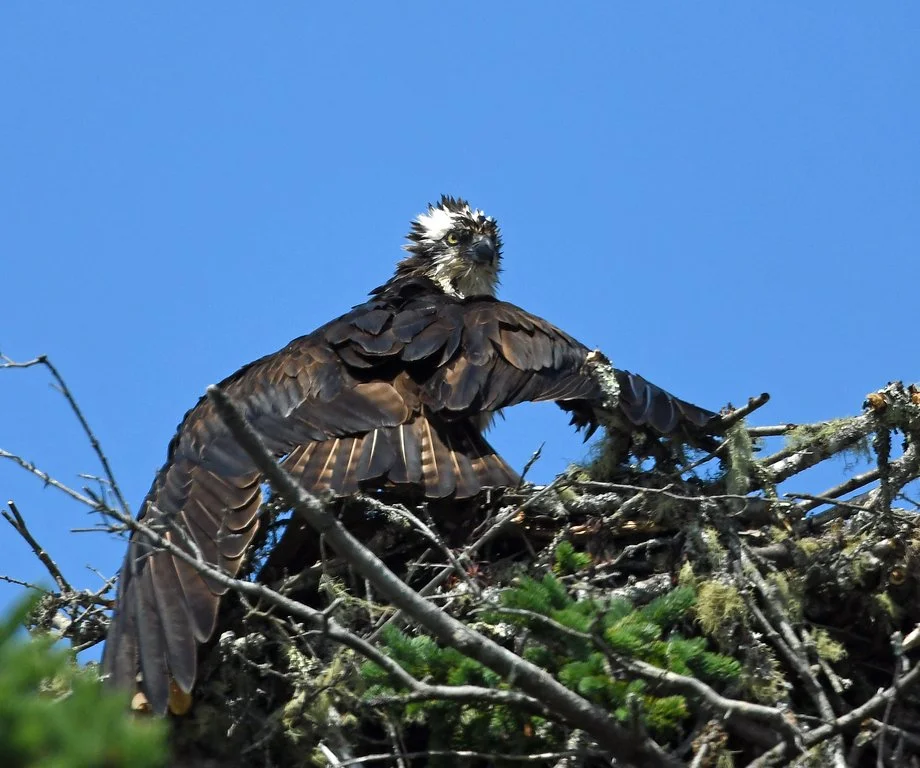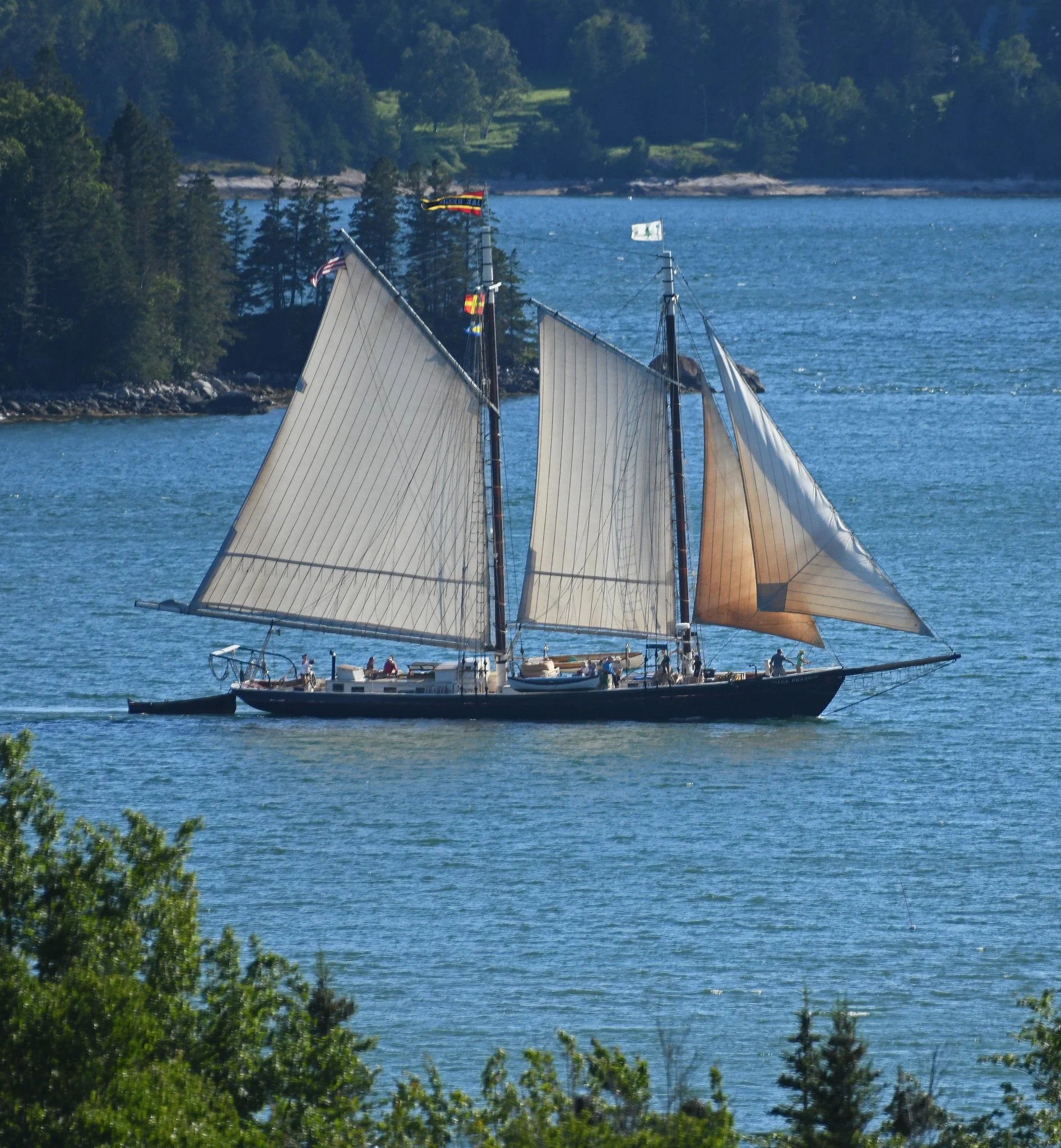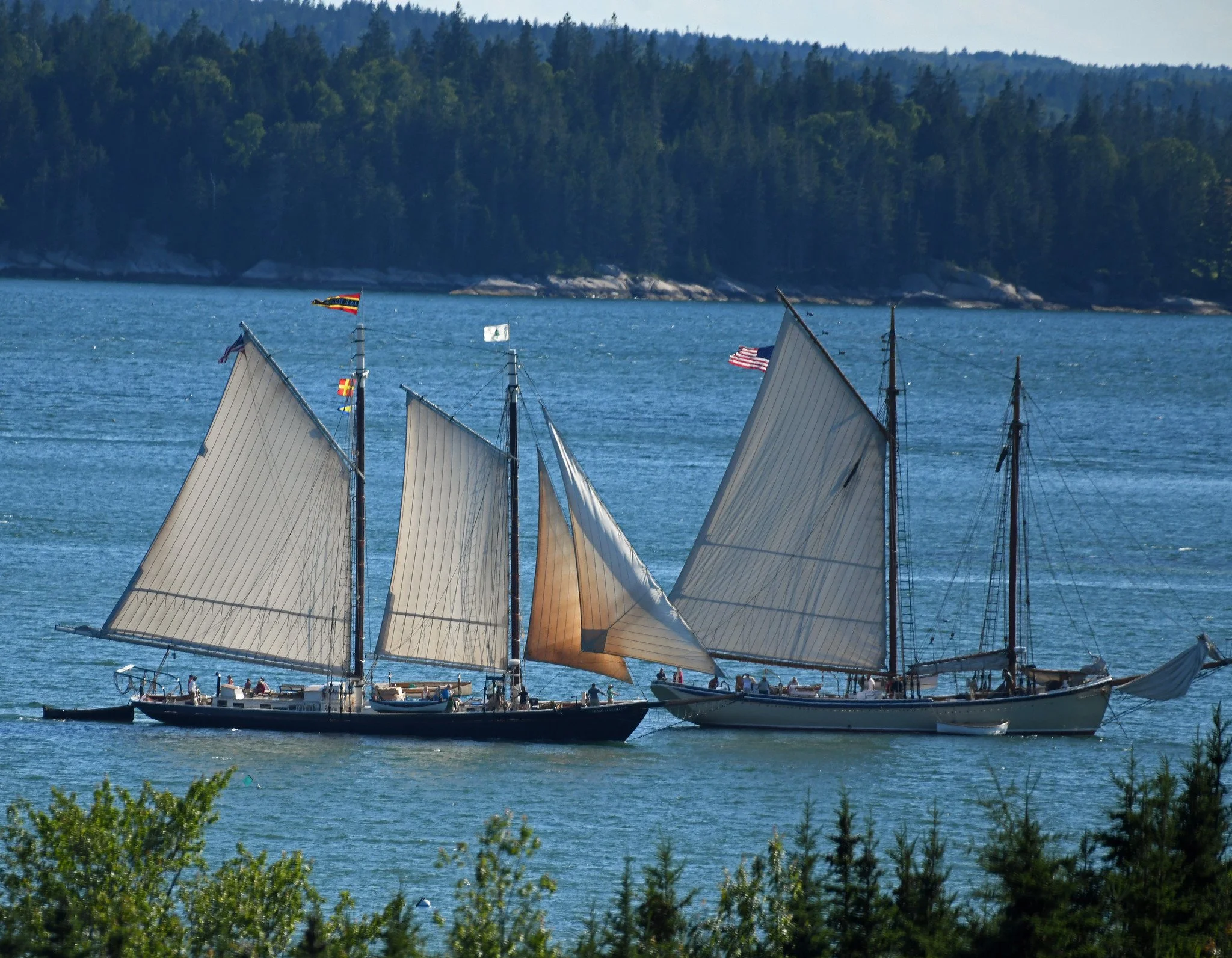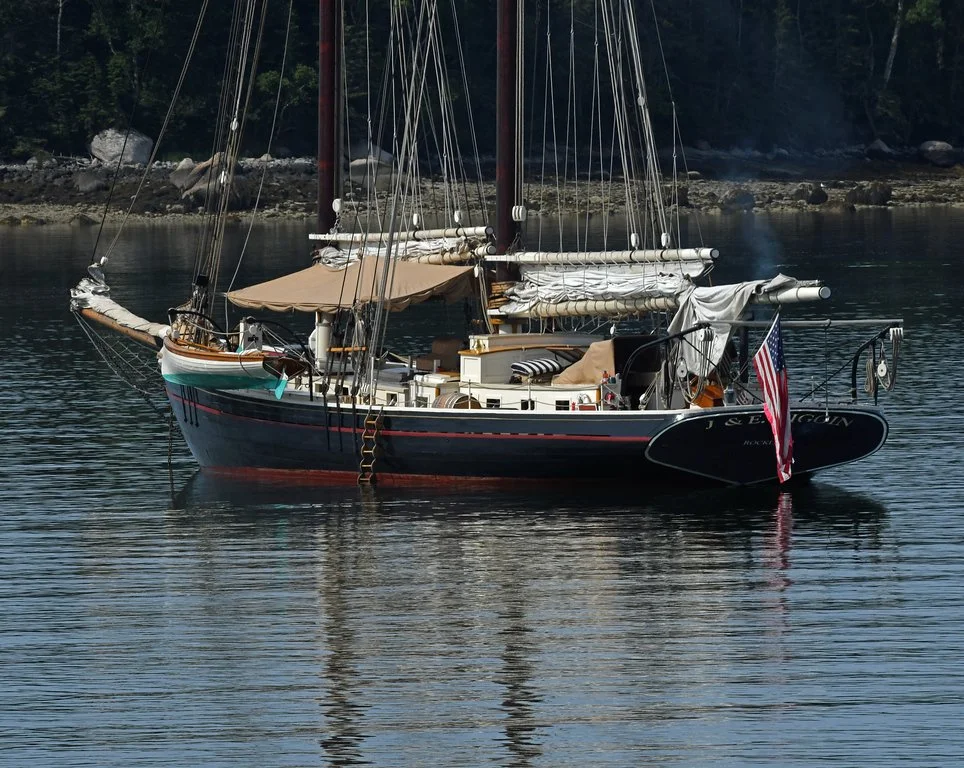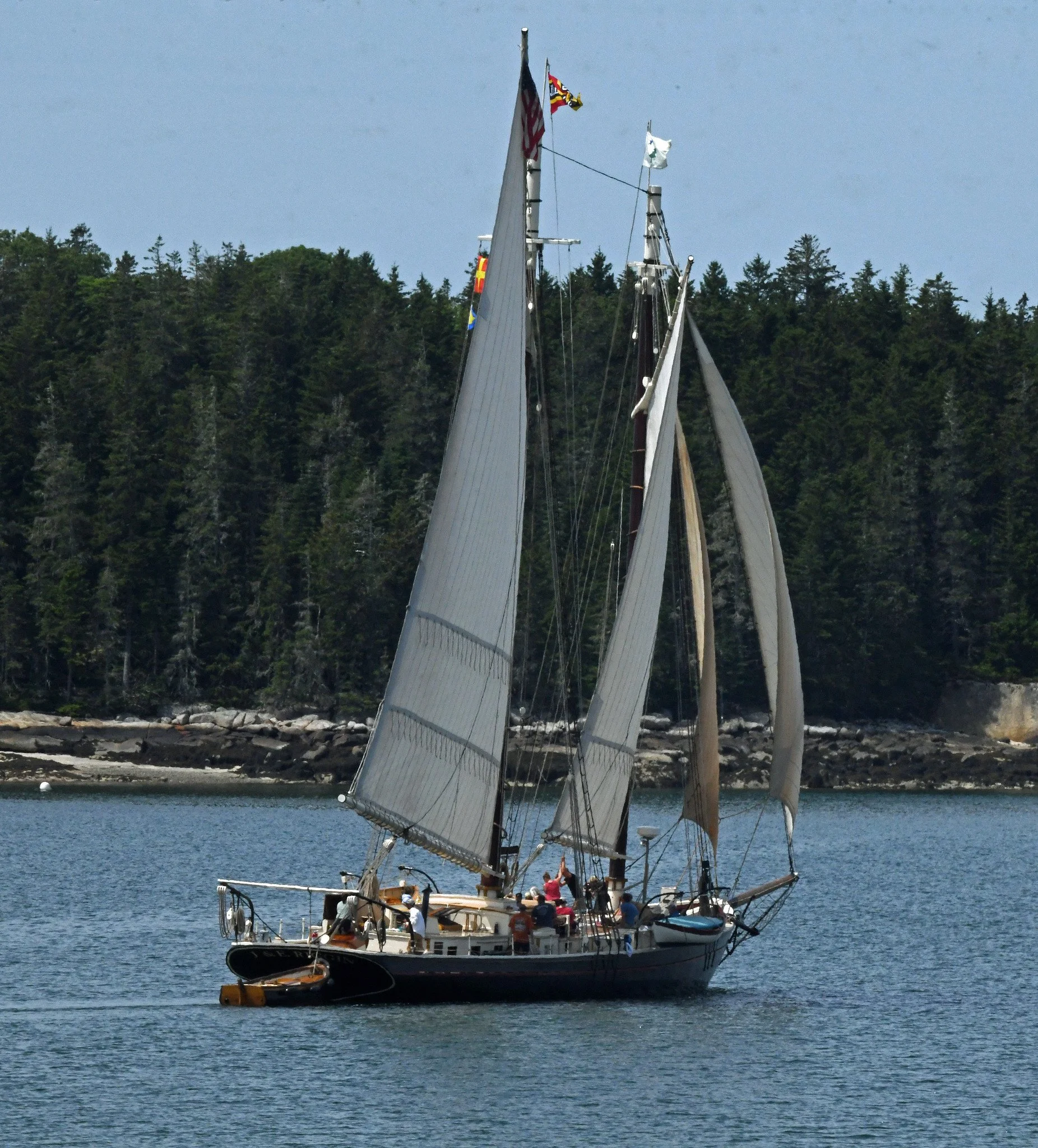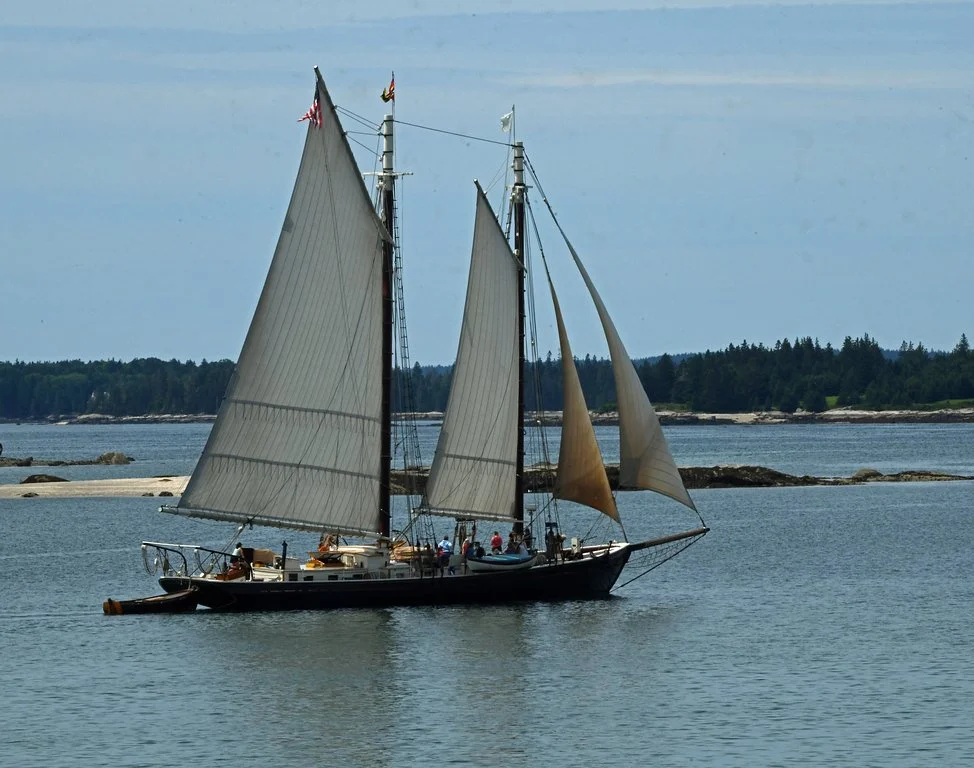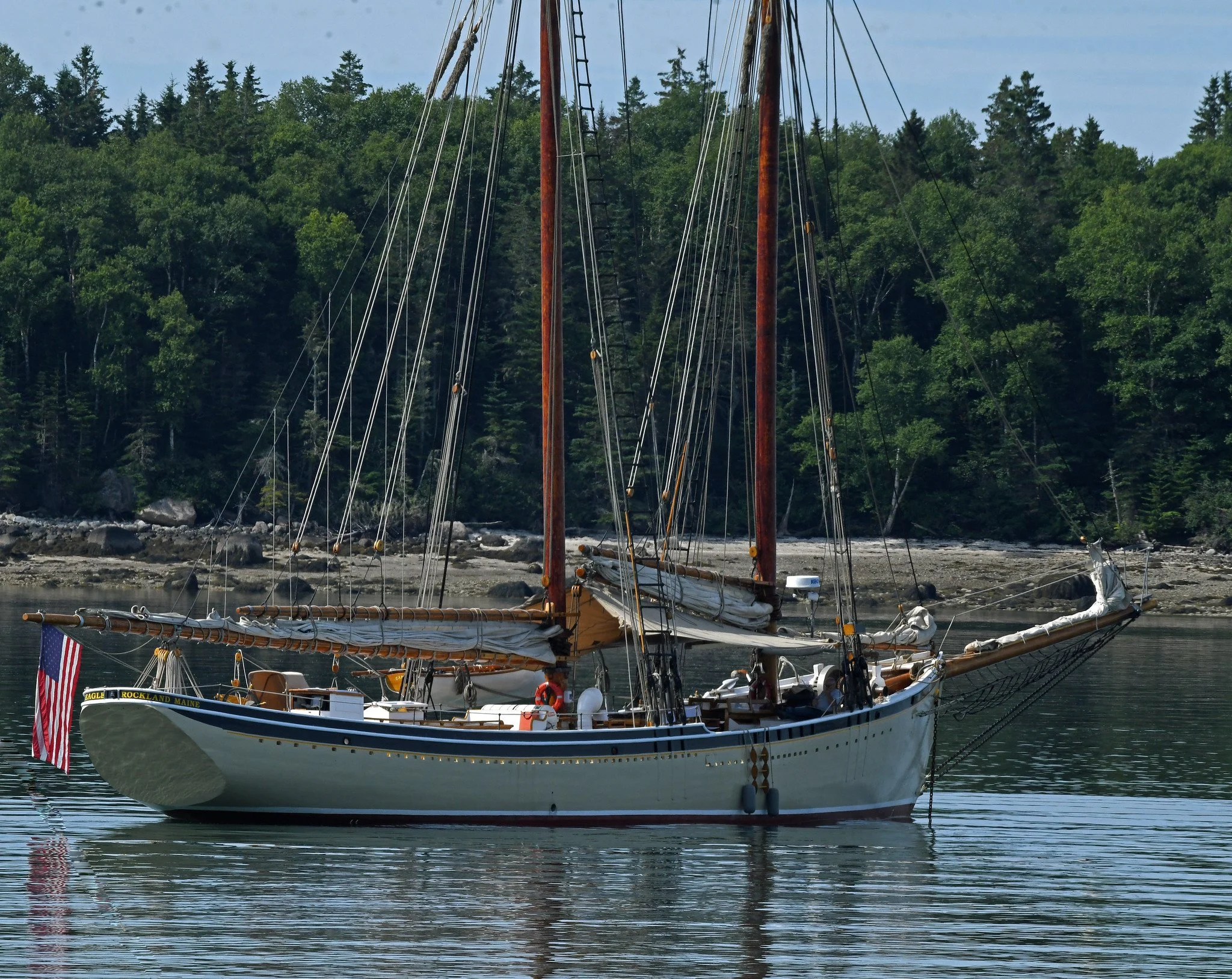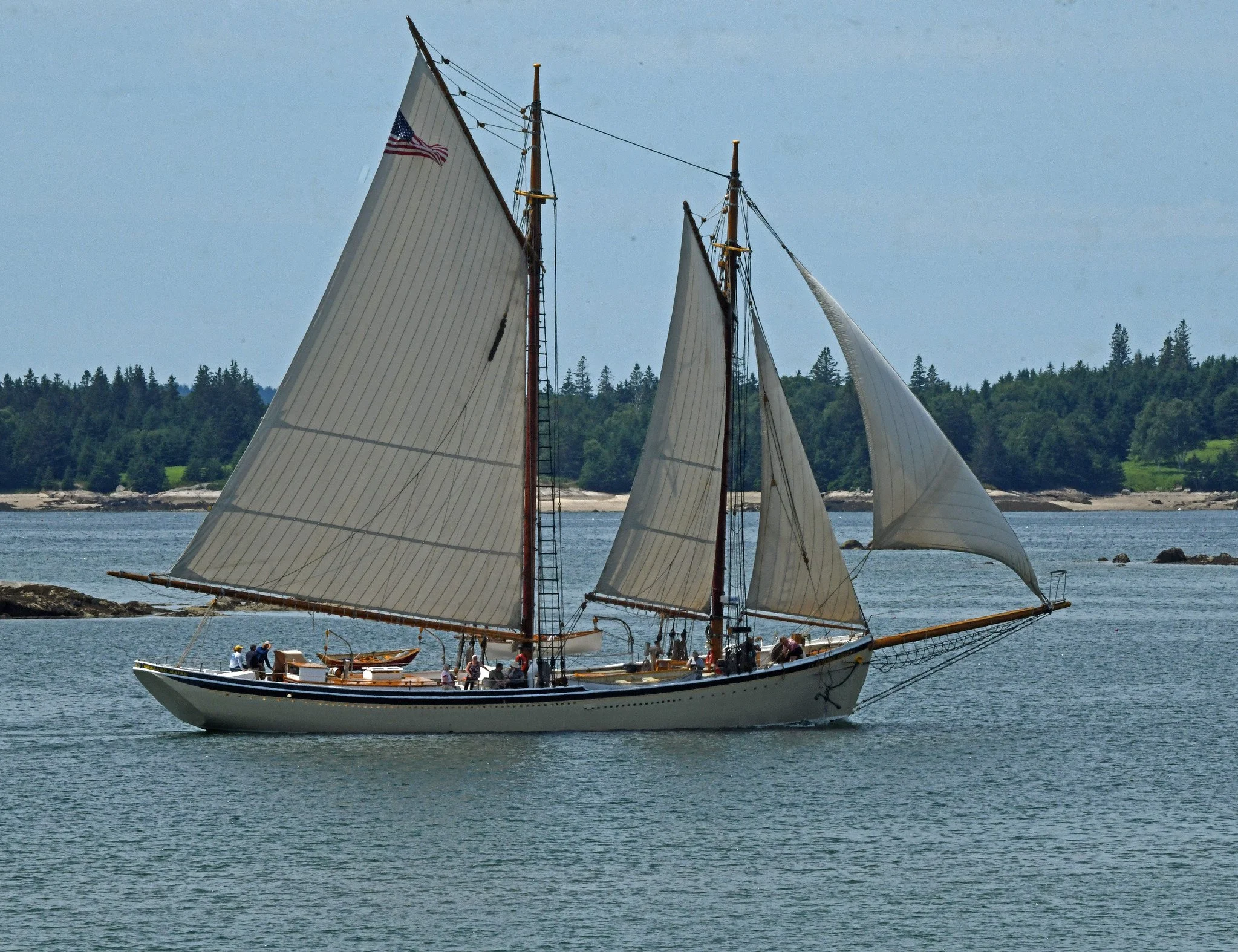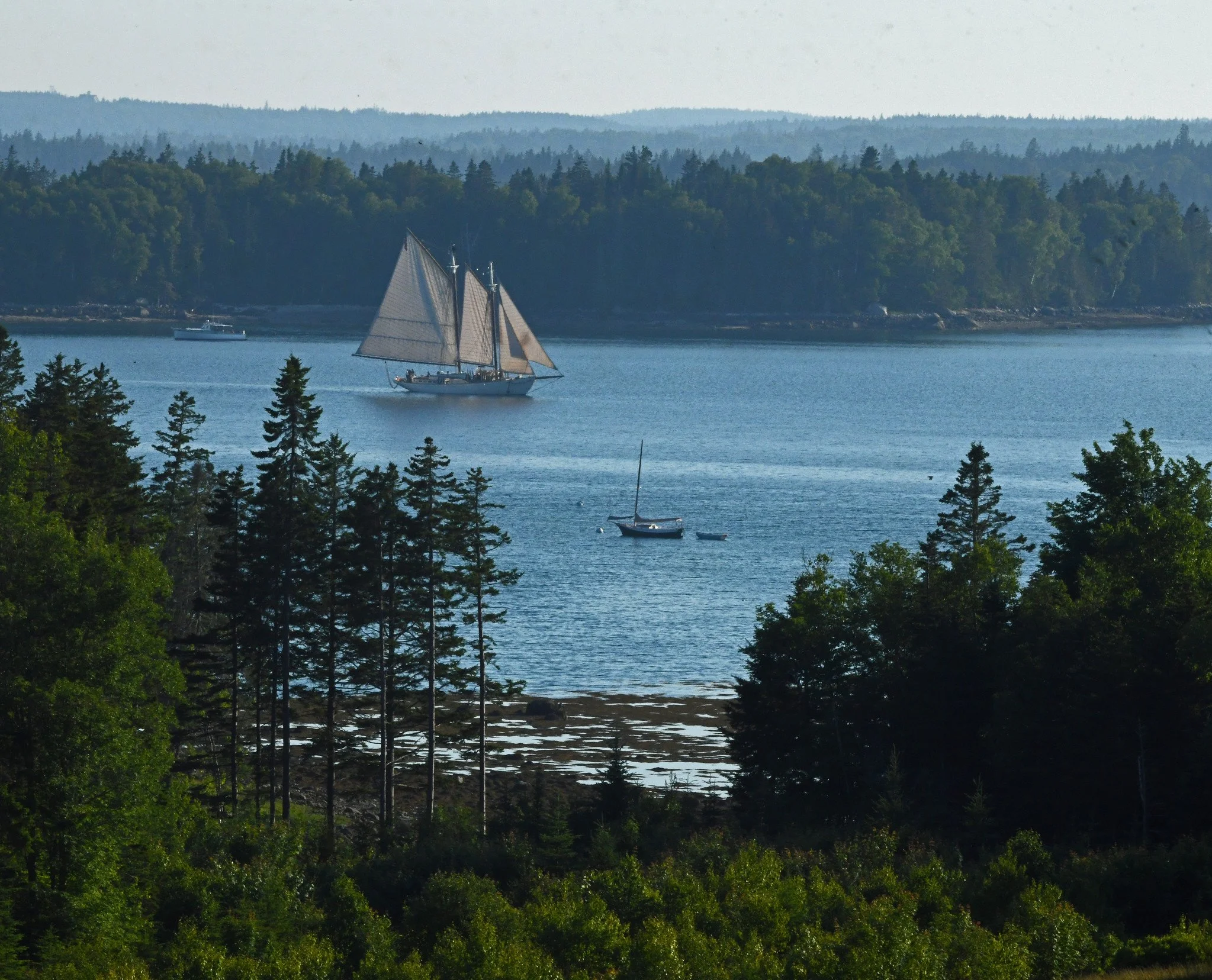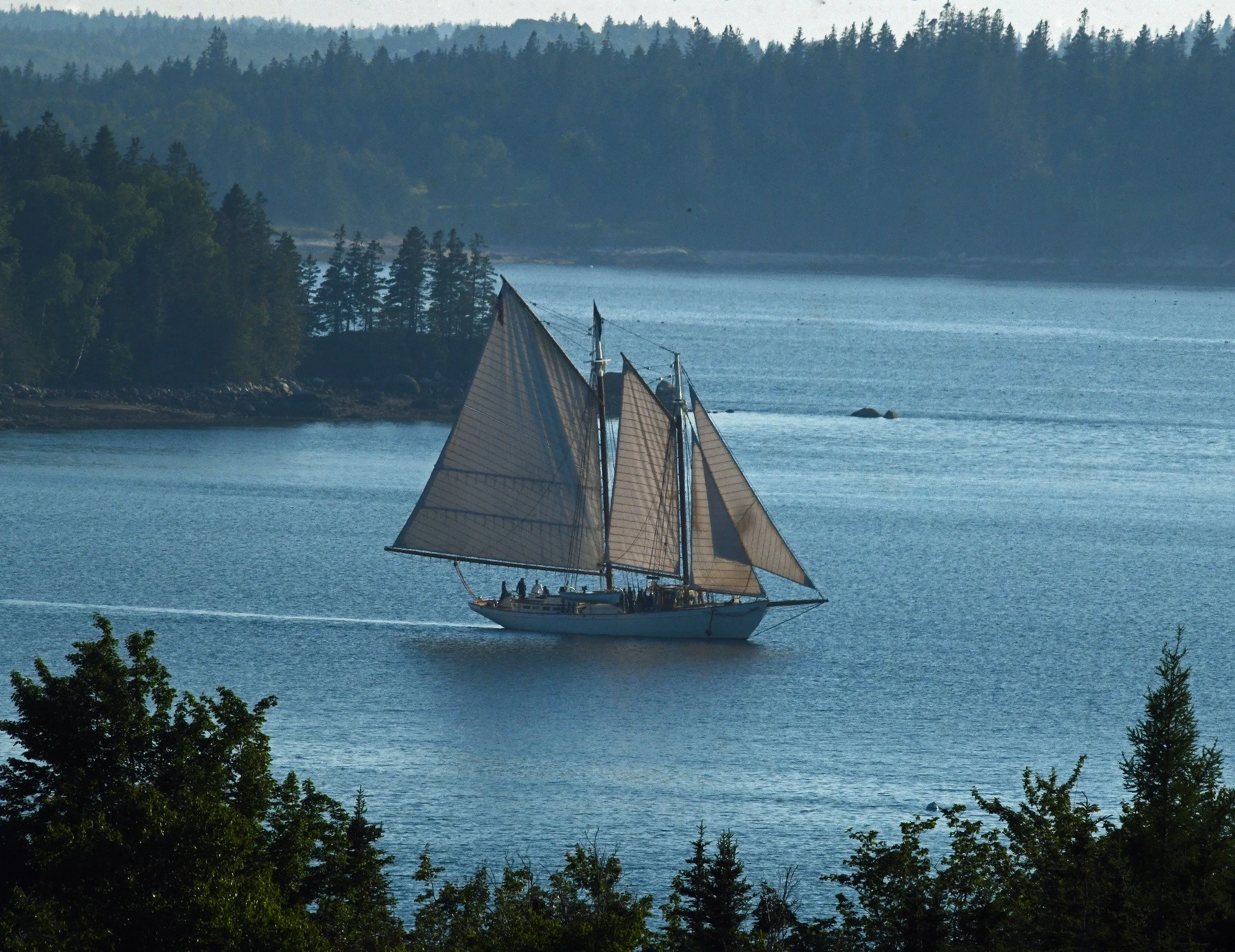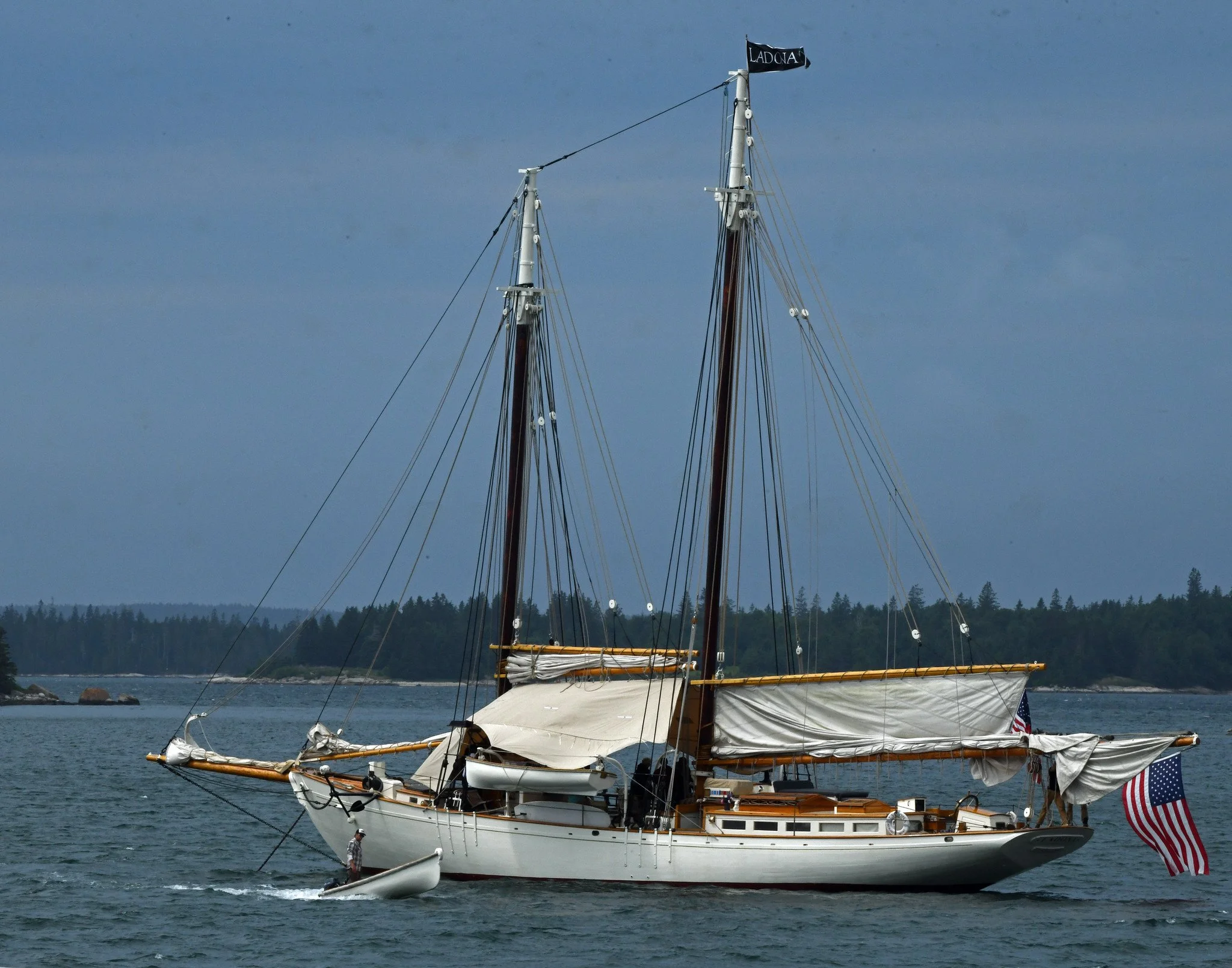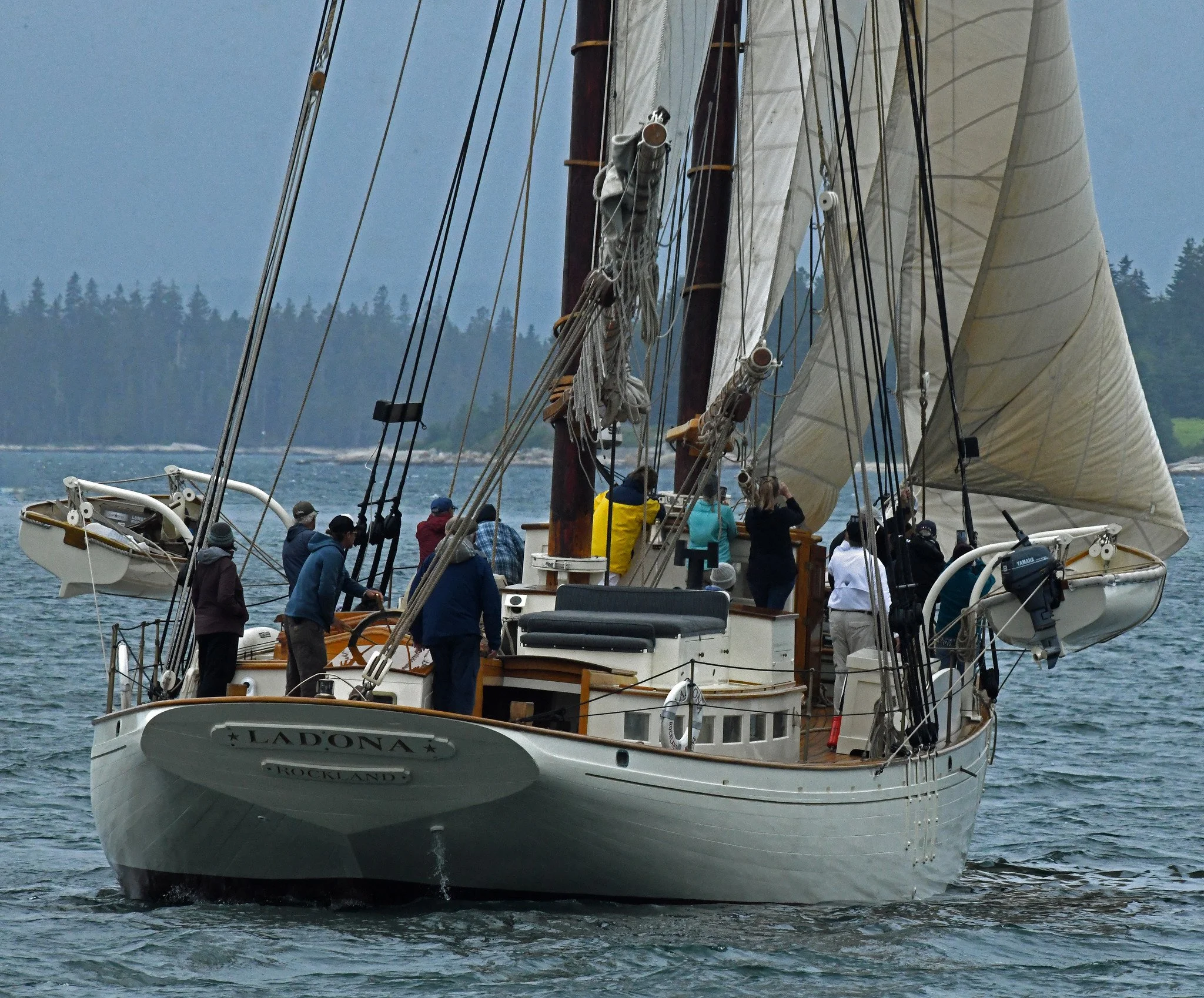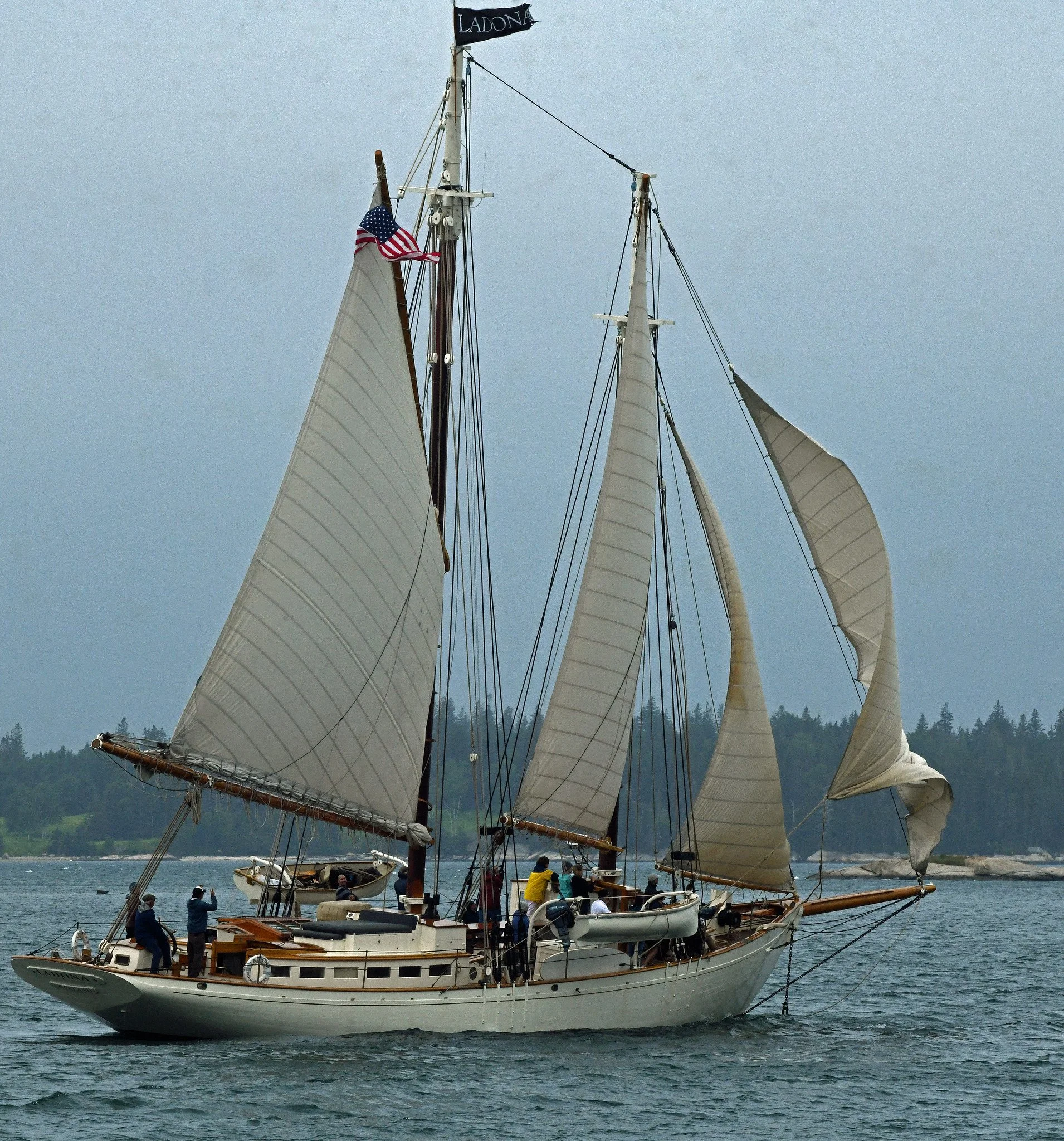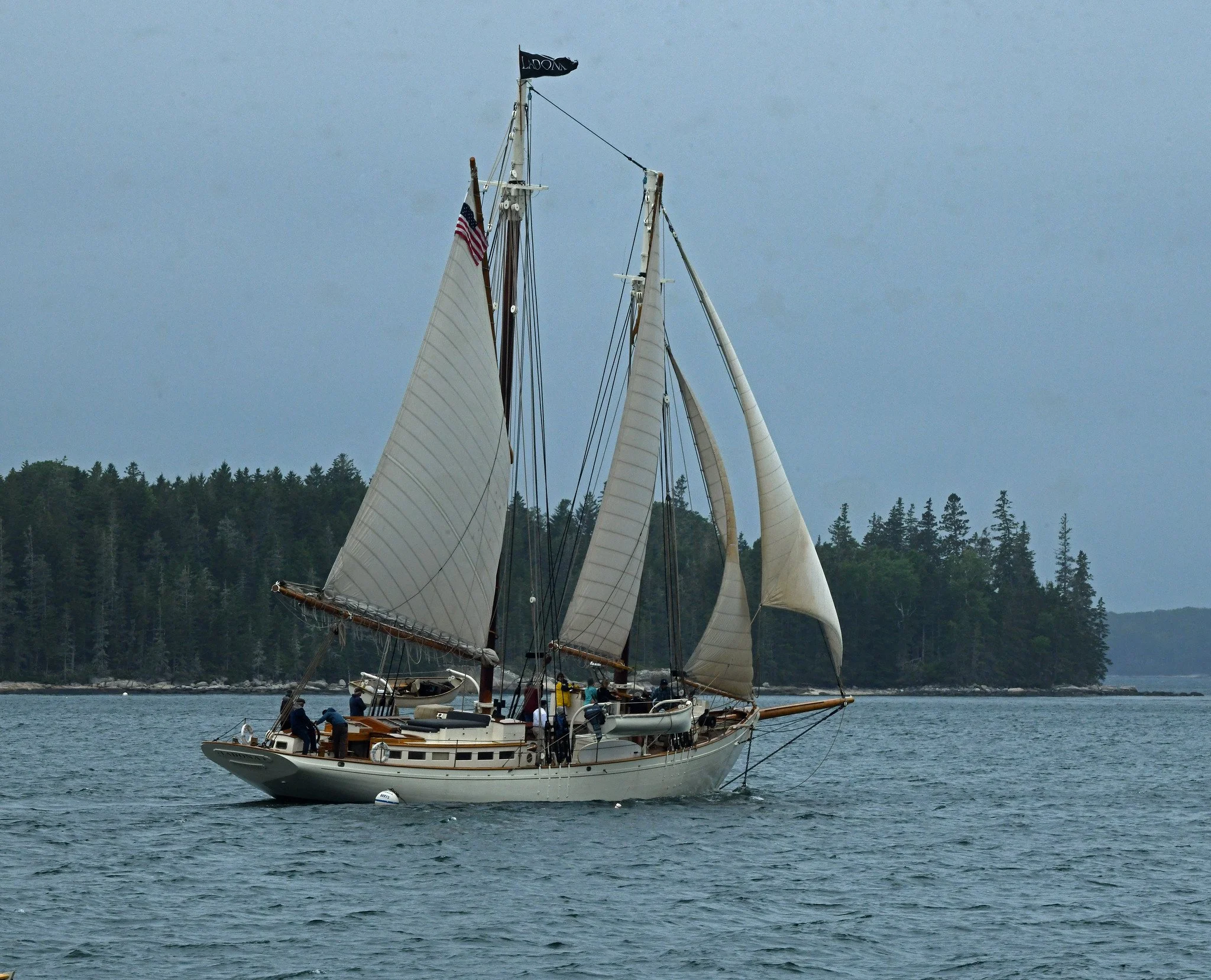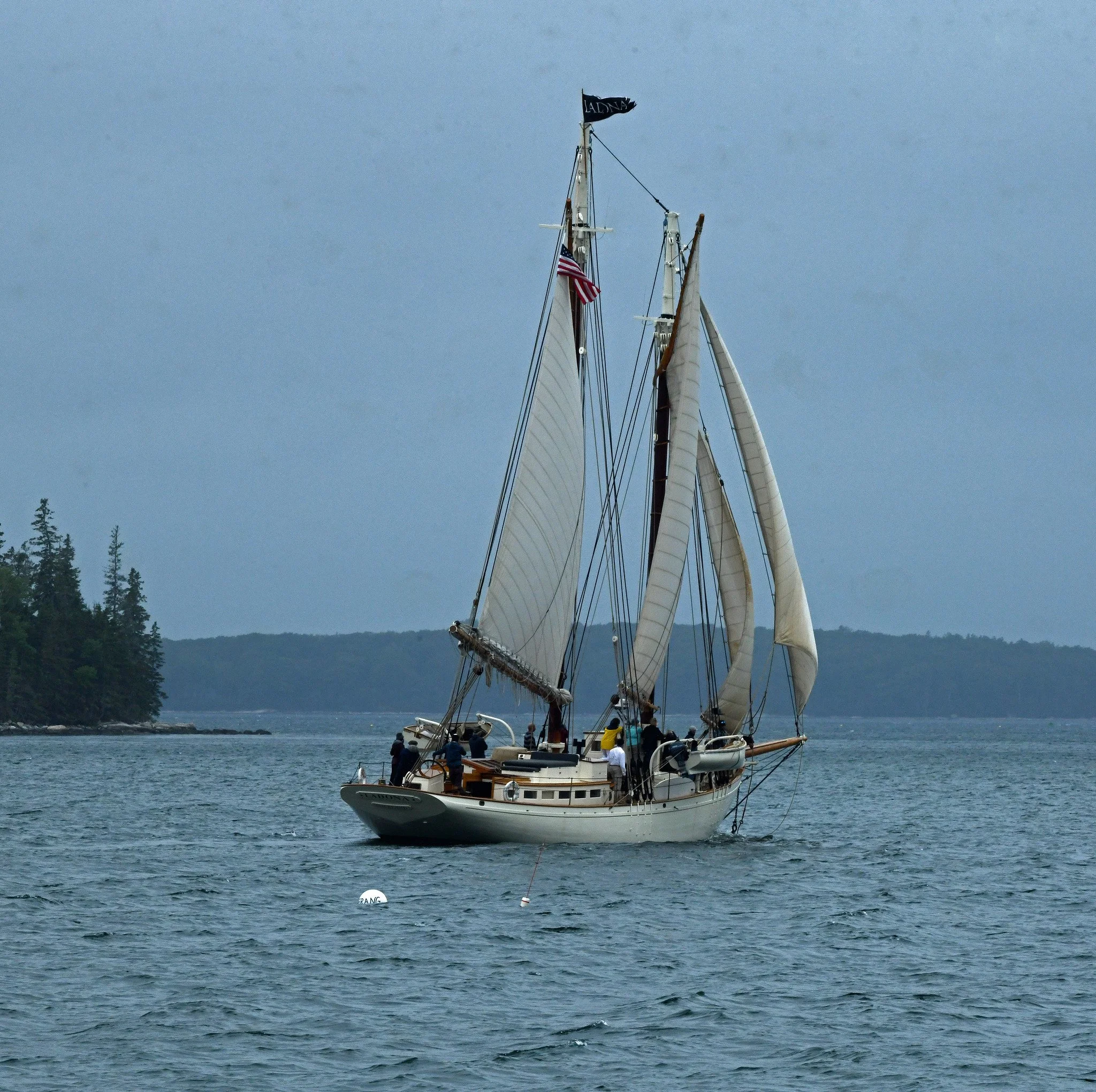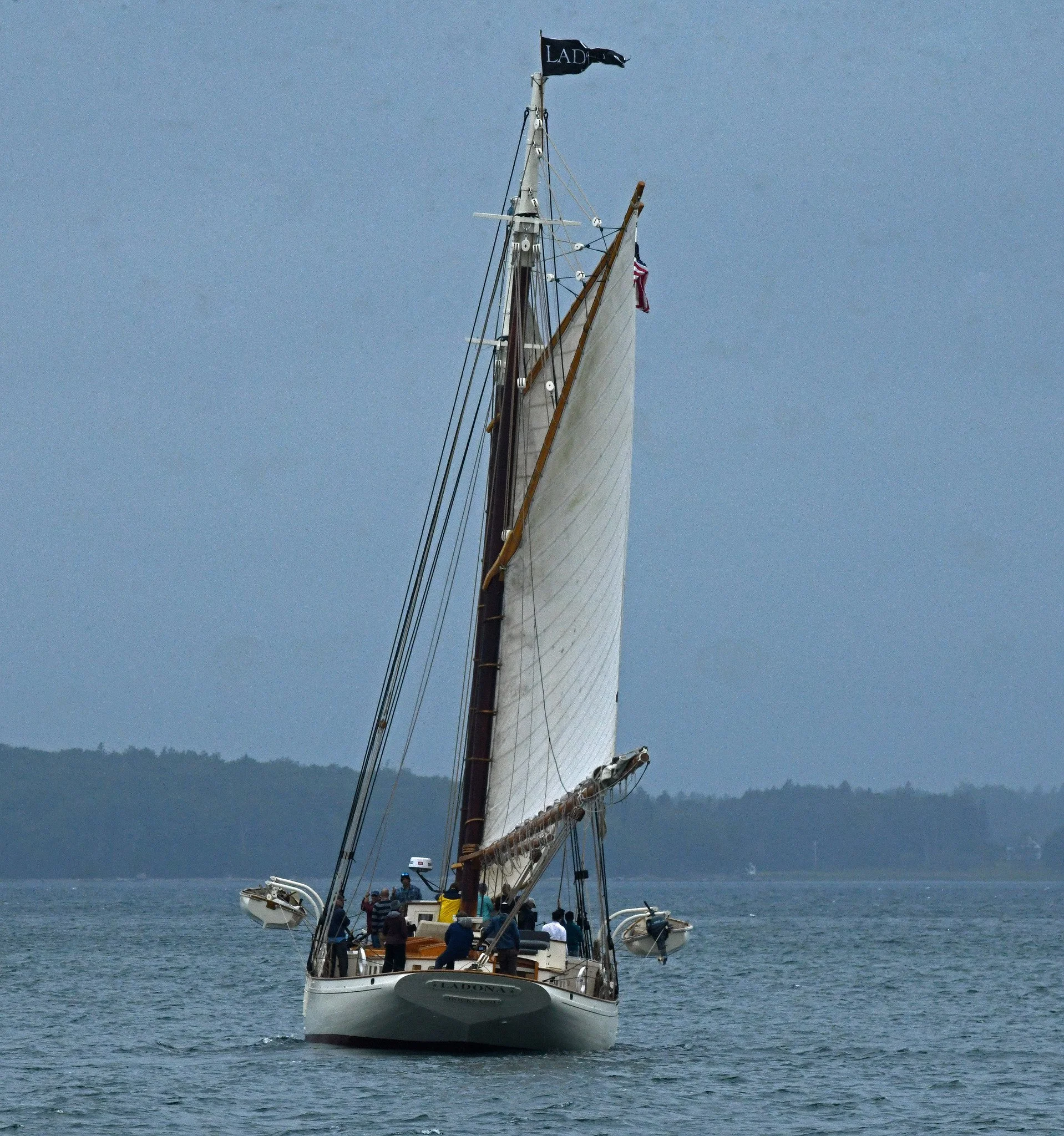Great news: June is alive and well! As those of you who follow these posts know, she is the youngest nestling in Ozzie and Harriet’s osprey family. Until recently, I sometimes have gone 10 days without seeing her on my one-hour visits every two or three days. That’s June in this image between her two brothers, David and Ricky, with Harriet on the right:
Now that she is slightly larger, June has started to rise from the nest’s deep bottom and give brief peek-over-the-edge appearances. Nonetheless, she still is being pushed around by her larger brothers when she gets in their way.
Harriet leaves the nest much more frequently now that the nestlings are almost ready to fledge; she often takes 15-or 20-minute trips to destinations unknown. Harriet doesn’t appear to have been fishing while absent (she doesn’t return with a fish); often, she is wet from taking a bath in a nearby pond or Great Cove. Here she is being greeted by David and Ricky upon returning to the nest:
Ozzie still is bringing fish to the nest for the family. The nestlings are able to tear off pieces and eat by themselves now, although Harriet sometimes still will tear off a piece and feed it to one of her offspring, a maternal instinct that requires deft maneuvering of her sharp beak. (Images taken in Brooklin, Maine, on July 11, 2022.)

